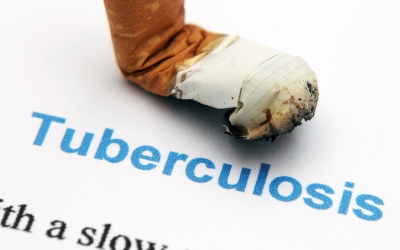Tuberculosis: What Do You Need To Know?
Studies suggest that a third of the world’s population, around two billion people, are infected with the bacteria which leads to tuberculosis. However, only one in ten of these infected people will actually show signs of the condition. This is known to professionals as active tuberculosis – in the UK alone, more than 9,000 people have this disease. The numbers of people with this disease were dropping since 1950, but since the 1980s the numbers have been increasing again. This disease tends to thrive in major cities, as there are more risk factors involved, such as overcrowded housing or people arriving from other countries where there is a high rate of TB. It can be easily treated with antibiotics, but you will need a long-term course of them. Tuberculosis is the second leading cause of death from an infectious disease globally, after HIV/AIDS. You may not be aware you have this disease, as many people don’t show the symptoms, but once you have been infected one of three things will happen. You either won’t have any symptoms because your immune system kills the bacteria and combats the infection, you will have symptoms because your immune system has failed to clear the infection and the bacteria has begun to grow in your organs, or you will get symptoms only if the infection is reactivated which could be many years after first becoming infected. There are many symptoms of tuberculosis of the lungs, which can include a persistent cough, weight loss, a loss of appetite, night sweats, fever and tiredness. If you have it in other organs, your symptoms will depend on where the infection is developing. They can include swollen neck glands, joint pain or back pain, abdominal pains, ankle swelling, breathlessness or chest pain, and skin sores.
When someone who is already infected with tuberculosis coughs or sneezes, you can become infected by the droplets of moisture which contain the bacteria which are then dispersed into the air. These bacteria can survive for long periods of time outside of the body, and they can multiply in the cells in your lungs if you inhale them. There is also a risk of them being transported to other organs in the body if the bacteria enters your bloodstream, as this will then begin growing in other parts of the body. You’re at a higher risk of developing the disease if you were born in areas of a high rate of the disease, such as South East Asia and Eastern Europe; have close contact with someone who has active tuberculosis; have previously had incomplete treatment for tuberculosis; have had another long-term disease such as diabetes, kidney failure or HIV/AIDS; are young or elderly; are dependent on alcohol or drugs, and are homeless or living in overcrowded conditions. However, it’s important to remember that you can’t catch tuberculosis from shaking hands, sharing food or drink, sharing a toothbrush, touching bed linen that someone with TB has used, kissing or using a toilet seat that someone with TB has used.
The testing for TB consists of either a chest x-ray where your radiographer can check for signs of infection, or through a phlegm sample. You will be asked to provide three samples of phlegm which you cough up, not just your saliva, which are then sent away for testing to see if there are signs of bacteria in them. Not only do these samples help to diagnose your condition, but they also help to determine which antibiotics are most effective to treat it. The treatment stage is long for this condition, generally lasting for around six months. If you think you may have the symptoms of tuberculosis, you should seek advice from your GP as soon as possible.


Comments are closed.